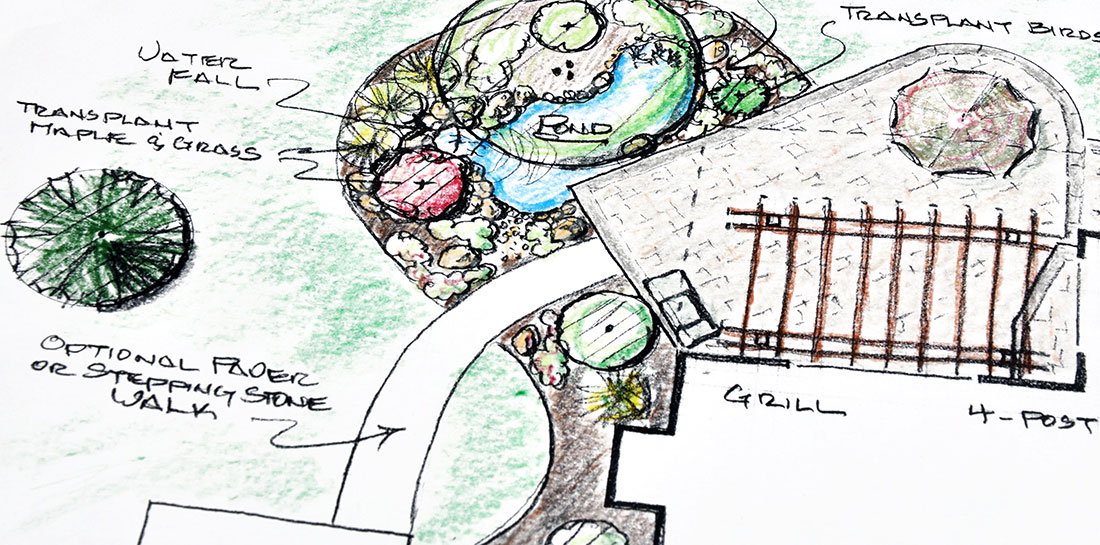
As Yogi Berra would say, “If you don’t know where you are going, you’ll end up someplace else.” When it comes to designing a water-efficient landscape/yardscape, start with a thorough evaluation of the area. Draw a to-scale plan of the property that includes the home’s footprint, driveway and patio(s), sheds, swimming pools, and other features like ponds and arbors/gazebos.
Make notes about conditions that affect plants: topography – is the land flat or does it slope? Are there areas where water collects after a heavy rain? Areas where nothing seems to grow well? Track the sun – when does it hit sites you want to landscape? Are there any areas that are perpetually in the shade? Is there an irrigation system already installed? What kind of delivery system (rotors, rotary sprinklers, pop ups, drip, etc.)? How many zones?
Once you have cataloged the yard’s features and structures, decide what you want to include in the design plan – butterfly or humming bird attracting plants? Improve curb appeal? Any favorite exotic or showy plants? These almost always require more care, but you don’t have to rule them out in a water-efficient yardscape. One successful strategy is to locate these favorites for optimal enjoyment – like outside major windows or patios. Experts call these areas “oasis zones.”
Again, grouping ALL plants by their water requirements is essential! (Area nurseries and County Extension Agencies may be able to help you become familiar with the care requirements of existing plants or the ones you’d like to add.)
Don’t hesitate to get help in creating your dream yardscape design. Determine your budget at the outset to cover professional assistance for design, amending the soil, installing or adjusting irrigation components, improvements (flagstone patio and walk areas, water features), and turfgrass if appropriate. The good thing about carefully planning your yardscape is that it can be accomplished gradually over a number of years. Think of it as a work in progress!